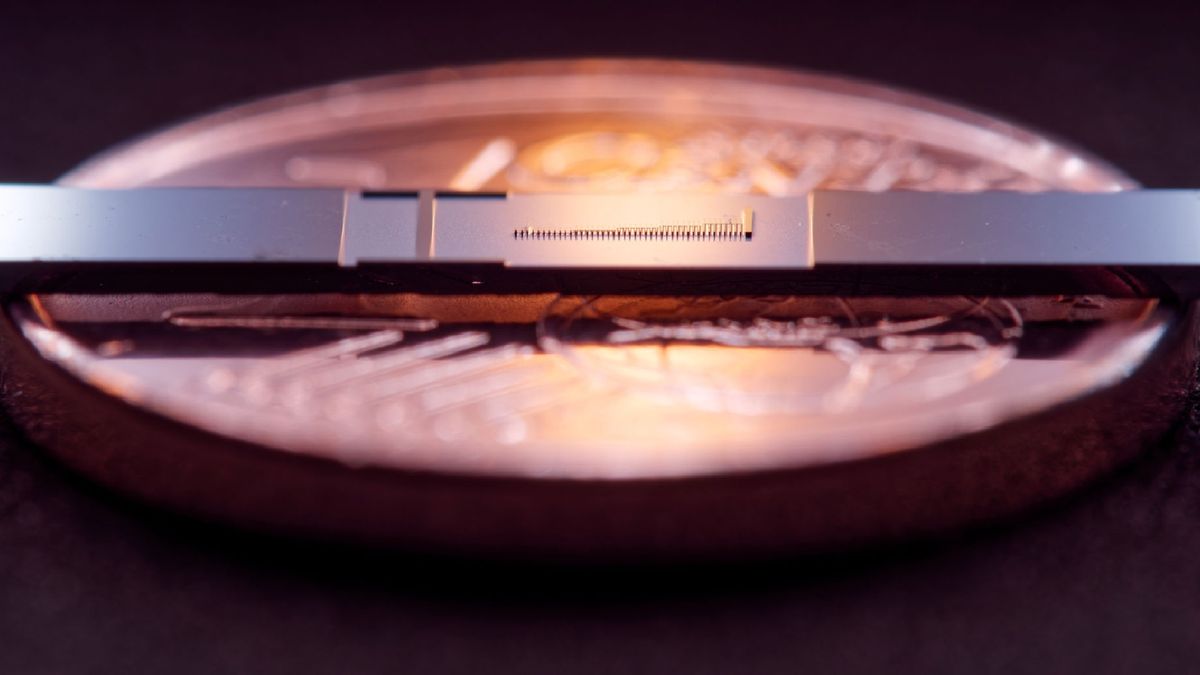
Microscopic Particle Accelerator Surpasses Large Hadron Collider
Scientists made a tiny electron accelerator using lasers that fits on a coin. It’s the first of its kind in the world

Researchers have recently achieved a significant breakthrough by successfully delivering a live birth of a “chimeric” monkey using stem cells extracted from two distinct embryos.
Scientists have successfully operated the world’s smallest particle accelerator, roughly the size of a small coin. This groundbreaking technology, called a nanophotonic electron accelerator (NEA), uses a microchip with thousands of tiny pillars in a vacuum tube.
By directing mini laser beams at these pillars, researchers can accelerate electrons. This innovation has potential applications, including placing miniature accelerators inside human patients for various purposes.
The primary acceleration tube measures just 0.02 inches (0.5 millimeters) in length. This is an astonishing 54 million times shorter than the 16.8-mile-long (27 km) ring forming CERN’s Large Hadron Collider (LHC) in Switzerland.
The LHC is the world’s largest and most potent particle accelerator, renowned for revealing various particles such as the Higgs boson (or God particle), elusive neutrinos, the charm meson, and the enigmatic X particle.
The interior of the miniature tunnel is just about 225 nanometers wide. To put it in perspective, human hairs typically range from 80,000 to 100,000 nanometers in thickness, as indicated by National Nanotechnology Institute.

In a recent study published on October 18 in the journal Nature, scientists from the Friedrich–Alexander University of Erlangen–Nuremberg (FAU) in Germany employed the small device to boost electrons from an energy level of 28.4 kiloelectron volts to 40.7 keV, marking an increase of approximately 43%.
This marks the inaugural successful activation of a nanophotonic electron accelerator, as initially proposed in 2015, according to the researchers. Although scientists at Stanford University have also accomplished this with their miniature accelerator, their findings are currently undergoing review.
Co-author Roy Shiloh, a physicist at FAU, stated, “For the first time, we really can speak about a particle accelerator on a [micro]chip.”
While the Large Hadron Collider (LHC) utilizes over 9,000 magnets to generate a powerful magnetic field propelling particles to approximately 99.9% of the speed of light, the nanophotonic electron accelerator (NEA) also forms a magnetic field.
However, it achieves this by directing light beams at the pillars within the vacuum tube, resulting in a much weaker energy field. Electrons accelerated by the NEA possess only about a millionth of the energy of particles accelerated by the LHC.
Nonetheless, researchers anticipate enhancing the NEA’s design through alternative materials or stacking multiple tubes, potentially boosting particle acceleration. Despite these improvements, they acknowledge that the NEA will never achieve energy levels comparable to those attained by large colliders.
This might actually be a positive development, considering the primary purpose of developing these accelerators is to harness the energy emitted by accelerated electrons for precise medical treatments. These treatments aim to replace more harmful forms of radiotherapy, commonly employed to eliminate cancer cells.
“The ideal application would involve placing a particle accelerator on an endoscope to deliver radiotherapy directly to the affected area within the body,” explained study lead author Tomáš Chlouba, a physicist at FAU. However, he emphasized that achieving this goal is still a considerable distance away.
Never miss any important news. Subscribe to our newsletter.
Related News


British Investor Who Predicted US Slump Warns of Next Crash

I’m a Death Doula: 4 Reasons I Believe Death Isn’t the End


Tech to Reverse Climate Change & Revive Extinct Species

AI Unlocks the Brain’s Intelligence Pathways

XPENG Unveils Iron Robot with 60 Human-like Joints

Can AI Outsmart Humanity?

11 ChatGPT Prompts to Boost Your Personal Brand

Keir Starmer Hints at Possible Tax Hikes on Asset Income

Navigating the Future of AI: Insights from Eric Schmidt
